Multi-Functional Design and Optimization of Louvers
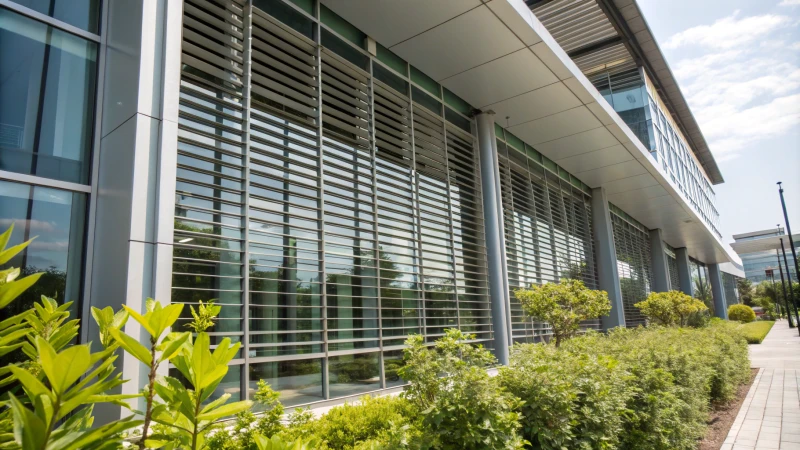
In the quest for sustainable architecture, aluminum louvers stand out as a vital component in enhancing building efficiency.
Aluminum louvers enhance building efficiency by providing effective ventilation, reducing solar heat gain, and adding aesthetic value. Their adjustable design allows control over airflow and sunlight, optimizing indoor environments for comfort and energy savings.
While the basic functions of aluminum louvers may seem straightforward, the nuances of their design and material choices significantly affect their performance. Dive deeper into how these elements work together to provide energy efficiency and design flexibility in your projects.
Aluminum louvers reduce solar heat gain in buildings.True
Aluminum louvers block excessive sunlight, minimizing heat entry.
Adjustable louvers cannot control airflow effectively.False
Adjustable louvers are designed to regulate airflow efficiently.
What Are the Key Functions of Aluminum Louvers?
Aluminum louvers are a versatile architectural element that serve multiple functions. From providing ventilation to enhancing aesthetics, their utility makes them an integral part of modern building design.
Aluminum louvers primarily serve three key functions: ventilation, shading, and aesthetic enhancement. Their design allows for efficient airflow, sun protection, and visual appeal, making them a popular choice in architecture.
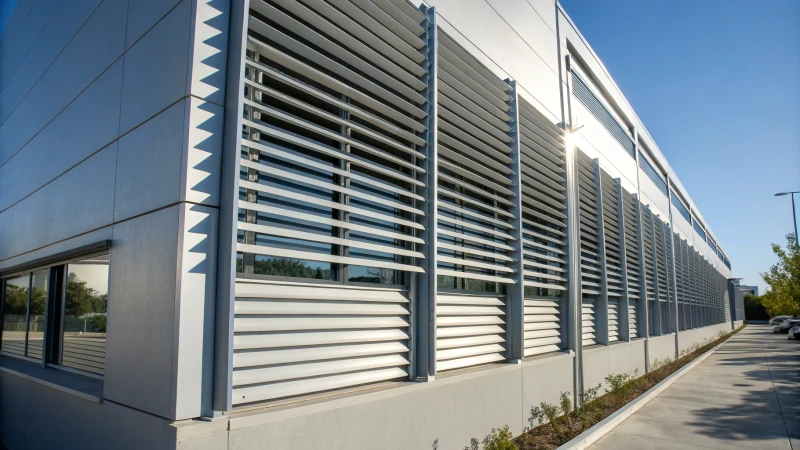
Ventilation Efficiency
Aluminum louvers excel in controlling airflow. By adjusting their angle, users can manipulate indoor air movement, creating a comfortable environment ideal for natural ventilation1. This makes them especially valuable in spaces like offices and residences.
Shading Capabilities
These louvers provide effective sun protection by blocking strong sunlight and UV rays. This not only protects indoor furniture but also helps reduce energy consumption by maintaining cooler indoor temperatures. Adjusting the angle offers flexible light control, a boon for energy-efficient building design2.
Aesthetic Appeal
Aluminum louvers can be customized to complement various architectural styles. Available in a range of colors and designs, they seamlessly integrate with both modern and traditional aesthetics, enhancing the visual appeal of any structure.
| Aspect | Function |
|---|---|
| Ventilation | Adjust angles for controlled airflow in buildings. |
| Shading | Blocks sunlight and reduces heat gain. |
| Aesthetics | Customizable designs to match architectural styles. |
Material and Coating Choices
The choice of materials and coatings significantly influences the durability of aluminum louvers. High-strength aluminum alloys offer excellent corrosion resistance. Surface treatments like anodizing or powder coating further enhance weather resistance3, ensuring long-lasting performance.
Installation Systems
Modern aluminum louvers often come with modular designs, simplifying installation. Lightweight components make handling easy, reducing potential construction risks. Standardized accessories ensure quick, accurate assembly, making them a preferred choice for efficient construction processes.
Aluminum louvers improve indoor air quality.True
They control airflow, enhancing ventilation efficiency in buildings.
Aluminum louvers are not customizable.False
They can be tailored in color and design to match architectural styles.
How Do Different Louver Designs Impact Building Performance?
Louvers are more than just aesthetic additions to buildings; they play a vital role in energy efficiency and comfort. But how do different designs affect overall building performance?
Different louver designs impact building performance by influencing ventilation, shading, and aesthetics. Horizontal louvers typically improve airflow and shading, while vertical designs offer enhanced privacy and unique visual effects. Choosing the right design depends on the building’s specific needs and environmental conditions.
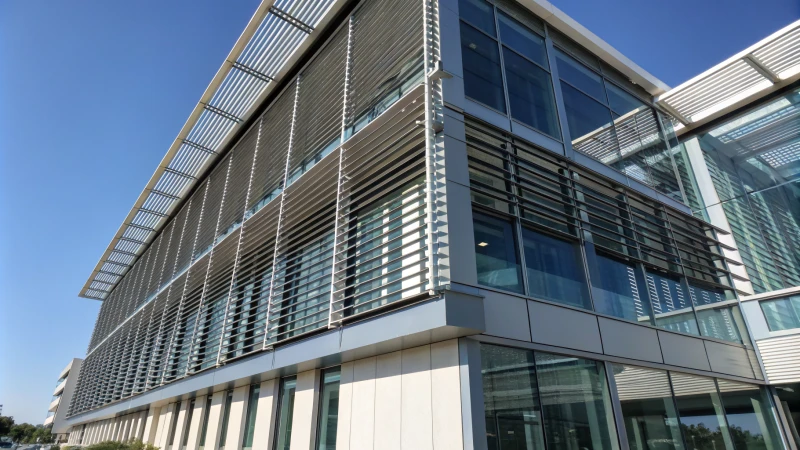
The Role of Louvers in Ventilation
Louvers enhance ventilation by allowing air to circulate freely, reducing reliance on artificial cooling systems. Horizontal louvers4 are particularly effective as they direct airflow efficiently across a space. In contrast, vertical louvers may obstruct airflow but offer more privacy.
Ventilation Design Comparison
| Design Type | Airflow Efficiency | Privacy | Use Case |
|---|---|---|---|
| Horizontal | High | Low | Open spaces needing airflow |
| Vertical | Moderate | High | Areas requiring privacy |
Shading Capabilities of Louvers
The shading ability of louvers significantly affects a building’s energy consumption. By blocking or redirecting sunlight, they reduce cooling costs. Curved louvers5 can create dynamic shade patterns, enhancing visual interest while controlling light levels.
Shading Efficiency Table
| Louver Shape | Sunlight Control | Energy Savings | Aesthetic Appeal |
|---|---|---|---|
| Flat | Moderate | High | Neutral |
| Curved | High | Moderate | High |
Aesthetic Impact of Louver Designs
Aesthetics are crucial in architectural design. Louvers not only serve functional purposes but also contribute to a building’s visual identity. Unique materials6 and coatings can transform simple louvers into striking architectural features.
Material and Coating Choices for Durability
Selecting the right material and coating can extend the lifespan of louvers. Aluminum, known for its resistance to corrosion, is a popular choice. Coatings like anodizing or powder coating enhance both durability and appearance.
Installation Systems and Their Impact
Modular installation systems simplify the construction process, allowing for quick assembly of prefabricated louver components. This modularity not only saves time but also minimizes errors during installation, proving advantageous in large-scale projects where efficiency is paramount.
In summary, choosing the right louver design can greatly influence a building’s performance in terms of energy efficiency, ventilation, and aesthetics. By considering factors such as shape, material, and installation systems, architects can optimize their designs to meet specific project goals.
Horizontal louvers offer high airflow efficiency.True
Horizontal louvers direct airflow efficiently, enhancing ventilation.
Curved louvers provide low aesthetic appeal.False
Curved louvers are noted for their high aesthetic appeal.
What Material Choices Optimize Louver Durability and Efficiency?
Selecting the right materials for louvers is crucial for enhancing durability and optimizing performance. With various options available, each material offers unique benefits in terms of longevity and functionality.
Aluminum, PVC, and wood composites are prime choices for louver construction. Aluminum offers superior durability and corrosion resistance. PVC is cost-effective and low-maintenance, while wood composites provide a natural aesthetic and insulation benefits.
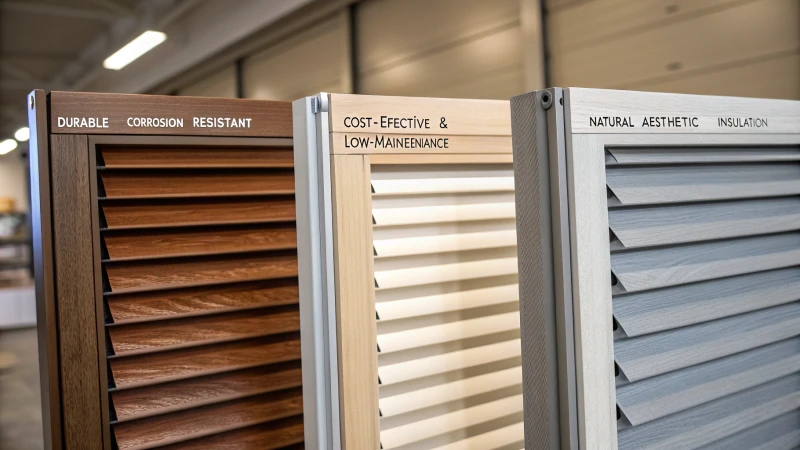
Aluminum: The Durable Choice
Aluminum is renowned for its exceptional durability and resistance7 to corrosion, making it an ideal material for louvers. It’s lightweight yet strong, which simplifies installation and reduces structural strain. Additionally, aluminum louvers can be treated with anodizing or powder coating to enhance their wear resistance and aesthetic appeal.
| Advantages | Details |
|---|---|
| Corrosion Resistance | Withstands harsh weather conditions |
| Low Maintenance | Requires minimal upkeep |
| Aesthetic Flexibility | Available in various colors and finishes |
PVC: Cost-Effective and Practical
PVC is a versatile material choice for louvers, offering affordability and ease of maintenance. It’s resistant to moisture and insects, making it a practical option for environments prone to humidity or pest issues. However, while PVC is durable, it may not offer the same strength as aluminum under extreme weather conditions.
| Advantages | Details |
|---|---|
| Cost-Effective | Budget-friendly option |
| Moisture Resistant | Ideal for humid environments |
| Easy to Maintain | Simple cleaning requirements |
Wood Composites: Aesthetic and Insulative Benefits
Wood composites combine natural aesthetics with modern engineering to create a durable louver material that also offers insulation benefits8. While they provide a more traditional look, they can require additional treatments to ensure long-term durability against moisture and pests.
| Advantages | Details |
|---|---|
| Natural Appearance | Mimics the look of wood |
| Thermal Insulation | Helps maintain indoor temperatures |
| Customizable Design | Can be tailored to specific architectural needs |
When choosing a louver material, consider the specific environmental challenges your project may face, such as exposure to saltwater air or extreme temperature fluctuations. Each material has its own set of strengths, so weighing these factors against your project’s needs is essential for optimizing both durability and efficiency in your design.
Aluminum louvers require frequent maintenance.False
Aluminum louvers are low maintenance, requiring minimal upkeep.
PVC louvers are ideal for humid environments.True
PVC is moisture resistant, making it suitable for humid areas.
How Do Installation Systems Affect Louver Performance and Ease?
Understanding installation systems is crucial for optimizing louver performance. They not only impact airflow and shading efficiency but also determine the ease of setup and maintenance. Let’s explore these aspects in detail.
Installation systems significantly impact louver performance by affecting airflow efficiency and ease of setup. Modular designs, lightweight materials, and standardized accessories enhance both functionality and installation convenience, making them crucial for optimal louver use.
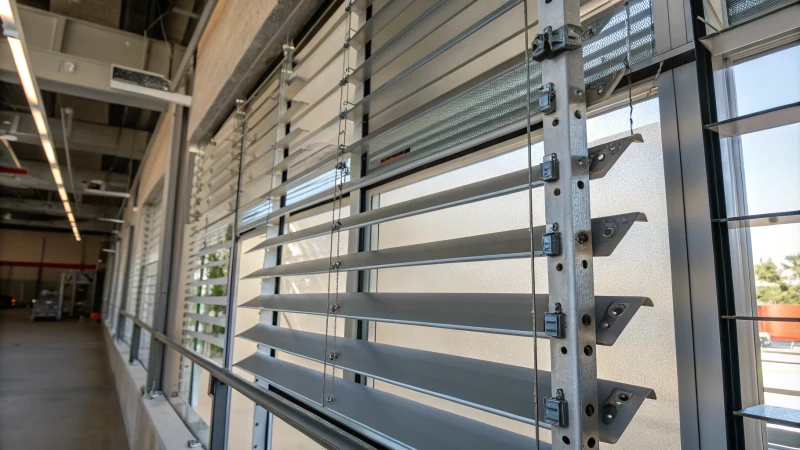
Impact on Airflow Efficiency
Installation systems can either enhance or hinder airflow efficiency9. A well-designed system allows smooth air passage, optimizing ventilation capabilities. For example, louvers with streamlined installation reduce drag and promote better air circulation, essential for HVAC systems.
Influence on Shading Effectiveness
The angle and positioning facilitated by certain installation systems affect shading performance. Adjustable systems allow for precise angling, providing optimal sun protection. Such flexibility can minimize energy costs by enhancing the building’s passive cooling.
| System Type | Airflow Optimization | Shading Control |
|---|---|---|
| Modular | High | Excellent |
| Fixed | Moderate | Limited |
Ease of Installation and Maintenance
Modular design is key to simplifying the installation process10. Prefabricated components are easy to assemble, reducing time and labor. Lightweight materials like aluminum also contribute to ease of handling and lower safety risks during setup.
Standardized accessories such as brackets and connectors ensure consistent and efficient assembly. These components minimize errors, making the installation process smoother and maintenance more straightforward.
| Feature | Benefit |
|---|---|
| Prefabrication | Quick assembly |
| Lightweight | Easy handling, safer setup |
| Standardized | Consistent and error-free |
Role of Material and Coating Choices
Choosing the right materials enhances louver durability and performance. Aluminum, known for its lightweight nature, is often preferred for its ease of installation. Meanwhile, coatings like anodizing improve wear resistance, extending the lifespan of louvers.
To sum up, understanding installation systems’ impact on louver performance is vital for achieving optimal functionality. Considerations like modularity and material choices directly influence both the effectiveness and convenience of louvers in architectural applications.
Explore more11 about how different designs impact louver performance in varied architectural settings.
Modular systems offer better airflow than fixed ones.True
Modular systems allow for better airflow optimization due to their design.
Fixed systems provide superior shading control.False
Fixed systems have limited shading control compared to adjustable modular systems.
Conclusion
Aluminum louvers enhance building efficiency through ventilation, shading, and aesthetics. Their adjustable designs optimize airflow and light control, making them essential for sustainable architecture.
-
Explore how aluminum louvers enhance natural ventilation in buildings. ↩
-
Learn how aluminum louvers contribute to energy-efficient building designs. ↩
-
Discover coatings that improve the weather resistance of aluminum louvers. ↩
-
Discover how horizontal louvers enhance airflow and cooling efficiency, essential for sustainable building design. ↩
-
Learn about the unique shading patterns and aesthetic benefits curved louvers bring to modern architecture. ↩
-
Explore cutting-edge materials that transform louver design, offering durability and unique visual appeal. ↩
-
Discover why aluminum’s corrosion resistance and strength make it a top choice for durable louvers. ↩
-
Learn how wood composites provide aesthetic charm along with insulation benefits for louvers. ↩
-
Discover how streamlined installation systems enhance airflow efficiency in louver setups. ↩
-
Learn how modular installation systems can simplify setup and reduce labor costs. ↩
-
Understand the role of design in optimizing louver performance across different structures. ↩



